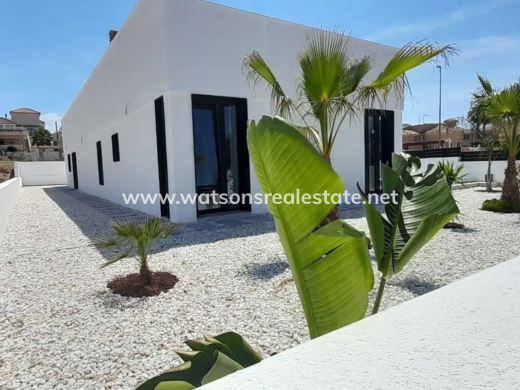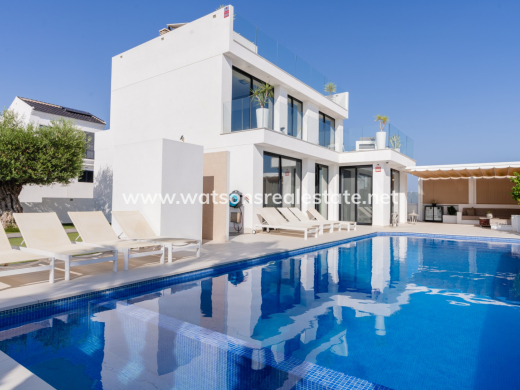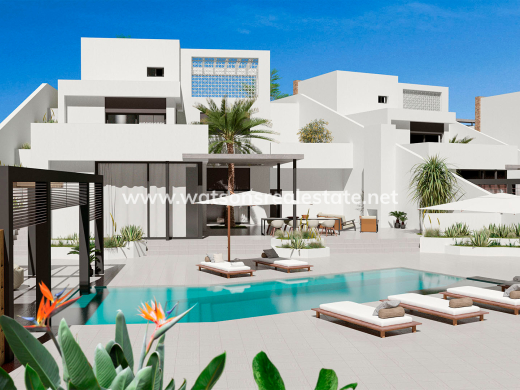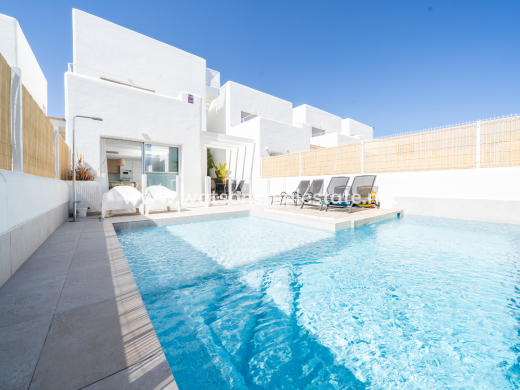Part 2: A journey into the past: The history of La Marina Urbanisation. How did it all begin?

PART 2: Buying a House in Spain: How It Was First Advertised
If you were one of the lucky ones who bought a house in La Marina during the 80s or 90s, this post will bring back many memories. We have dusted off the original MASA brochures to show you exactly how Spain and the La Marina Urbanisation were first presented to the world: a look back, to the very beginning.
When people first dreamed of buying a house in Spain, the image sold was taken straight from a postcard:
- Smiling, friendly people greeting you with a warm “buenos días.”
- Long family meals around a paella and a good wine.
- The rhythms of flamenco echoing late into the night.
- A slower, more relaxed way of life under the Mediterranean sun.
It was this dream — sun, culture and simplicity — that developers like MASA used to advertise urbanizations such as La Marina to foreign buyers in the 80s and 90s.
The following excerpts are part of the advertising used at the time to buy a house in Spain:
Spain is a land of good food and good wine
The national dish “paella” has as many varieties as there are cooks, but it always tastes best wherever you happen to be at the moment.
You can also try the “Spanish omelette” (potato omelette), freshly caught “sole” from the Mediterranean, or “prawns” and “mussels.” Food in Spain is inexpensive and you will soon learn to cook the Spanish way.

In Spain you will always be welcome
Wherever you go, you will be greeted by smiling, helpful people. The smiles are not false but genuine, from the heart. In the streets and shops you will hear kind greetings such as “Buenos días señora,” “Buenos días señor.” In Spain people take care of each other. They look after their elders and love their children. People laugh together and enjoy life.
Life in Spain is good and the pace is more of a leisurely stroll than a frantic race. After all, why rush when the sun embraces you everywhere? If you feel like activity, there are always golf courses, tennis courts and the crystal-clear waters of the Mediterranean.
Costa Blanca
Spain is a country of sunshine and friendly people. It is located opposite Africa, between the Atlantic Ocean to the west and the Mediterranean to the east. Spain is the third largest country in Europe, after Russia and France. Almost twice the size of the United Kingdom. The Pyrenees form a beautiful natural border with France to the north, and the Sierra Nevada rises above the Mediterranean to the south. On a clear day, you can see North Africa.
Spain has a total of 3,000 km of coastline, of which 1,000 km are sandy beaches. The warm Mediterranean washes the beaches of the east and south, bringing a constant flow of warm air inland.
Mediterranean summers are dry and winters, unlike other countries, are mild. The sun performs a daily miracle by easing pains, aches and joint stiffness associated with damper climates. Flowers such as hibiscus and bougainvillea thrive in this warmth.
Olives exported, tourists imported
Spain is the world’s largest exporter of olives. Rioja wine, lemons and oranges from the Costa Blanca are exported worldwide. Out of a population of 38 million, nearly 10 million work in agriculture. Farmers can still be seen ploughing with mules and threshing wheat with traditional tools. The harvest is taken to market the old-fashioned way, in handmade baskets hung on donkeys.
Spain is probably the biggest tourist country in the world. Every year more than 40 million tourists visit. Nearly a million foreigners have made Spain their second home. Many of them from the United Kingdom.
Russell Cowan & Co. is now one of the largest British property sales companies in Spain, holding weekly exhibitions throughout the country. Interest in investing in a house in Spain has grown considerably since Spain joined the European Economic Community (EEC) in 1986. Property values have also increased proportionally. Spain is a democratically governed country. The King is Juan Carlos and his wife, Queen Sofía.
Steeped in history...
The breath of history is everywhere. Aqueducts, amphitheaters, bridges and roads are typical monuments of the time when the Romans ruled Spain between 200 BC and 400 AD.
The Moors ruled the country for over 600 years from the 8th century AD. The Mosque of Córdoba and the Moorish palace of the Alhambra in Granada are magnificent tributes to that era.
During the 16th century, when Spain was a great power, it dominated vast areas: most of South and Central America, the West Indies and parts of Europe and Africa. It was then that King Charles I of Spain declared: “The empire on which the sun never sets.” Cathedrals, castles and works of art, both in Spain and around the world, serve as reminders of those great days when Spanish became a universal language.
Flamenco and Don Quixote Spain is a land of passionate music where the vibrant sounds of flamenco resound on warm evenings and the constant rhythm awakens the knight and the lady in every man and woman.
Spain is the land where Cervantes created Don Quixote, one of the most important literary works in the world.

Tradition and Modernity in La Marina Urbanisation: An Enclave in Constant Evolution
After this journey through the past and discovering why buying a house in Spain was so appealing and how the story of La Marina Urbanisation began, in the next installment we will explore how this iconic Costa Blanca destination has evolved over the decades and what makes it so special today.
If you found this information interesting, click on the following link to read the first part of this story: https://watsonsrealestate.net/news/542/history-of-la-marina-urbanisation-estate-agency/
Don’t miss the third and final part of our series to discover fascinating details and the current reality that continues to make La Marina a unique place to live and invest in Spain.































